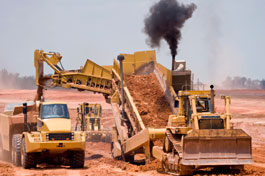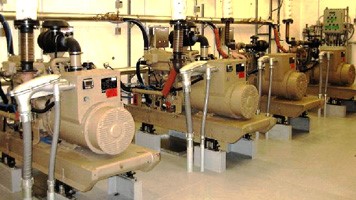The inventor of the diesel engine, Rudolf Diesel, originally designed his engine to use coal dust as fuel. He also experimented with vegetable oil before the petroleum industry began making petroleum diesel fuel. Most diesel fuel used in the United States is refined from crude oil. However, use of biodiesel and renewable diesel is increasing.
The first diesel engine automobile trip was completed on January 6, 1930. The nearly 800-mile trip was from Indianapolis, Indiana, to New York City. The trip demonstrated the potential value of the diesel engine design, which has been used in millions of vehicles since its inaugural trip.
Diesel fuel is important to the U.S. economy
Most of the products we use are transported by trucks and trains with diesel engines, and most construction, farming, and military vehicles and equipment also have diesel engines. As a transportation fuel, diesel fuel offers a wide range of performance, efficiency, and safety features. Diesel fuel also has a greater energy density than other liquid fuels, so it provides more useful energy per unit of volume.
In 2022, distillate (or diesel) fuel consumption (excluding biodiesel and renewable diesel) by the U.S. transportation sector was about 2.98 million barrels per day, or about 125 million gallons per day. This annual consumption accounted for about 75% of total U.S. distillate consumption and about 15% of total U.S. petroleum consumption. On an energy content basis, diesel fuel accounted for about 23% of total energy consumption in the U.S. transportation sector and for about 6% of U.S. total primary energy consumption.1
Diesel fuel is used for many tasks
Diesel engines in trucks, trains, boats, and barges help transport nearly all products people consume. Diesel fuel is commonly used in public buses and school buses.
Diesel fuel powers most of the farm and construction equipment in the United States. Diesel-engine-powered machinery can do demanding construction work, such as lifting steel beams, digging foundations and trenches, drilling wells, paving roads, and moving soil and rocks.
The U.S. military uses diesel fuel in tanks and trucks because diesel fuel is less flammable and less explosive than other fuels. Diesel engines are also less likely to stall than gasoline-fueled engines.
Diesel fuel is also used in diesel engine generators to generate electricity. Many industrial facilities, large buildings, institutional facilities, hospitals, and electric utilities have diesel generators for backup and emergency power supply. Most remote villages in Alaska use diesel generators as the primary source of electricity.
1 Source: Monthly Energy Review, June 2023 and Petroleum Supply Monthly, June 2023. Data for 2022 are preliminary. Total energy consumption includes primary energy consumption by the sector, retail electricity sales to the sector, electrical system energy losses, and other energy losses throughout the energy system.
Last updated: September 14, 2023, with data available from source reports as indicated; data for 2022 are preliminary.



